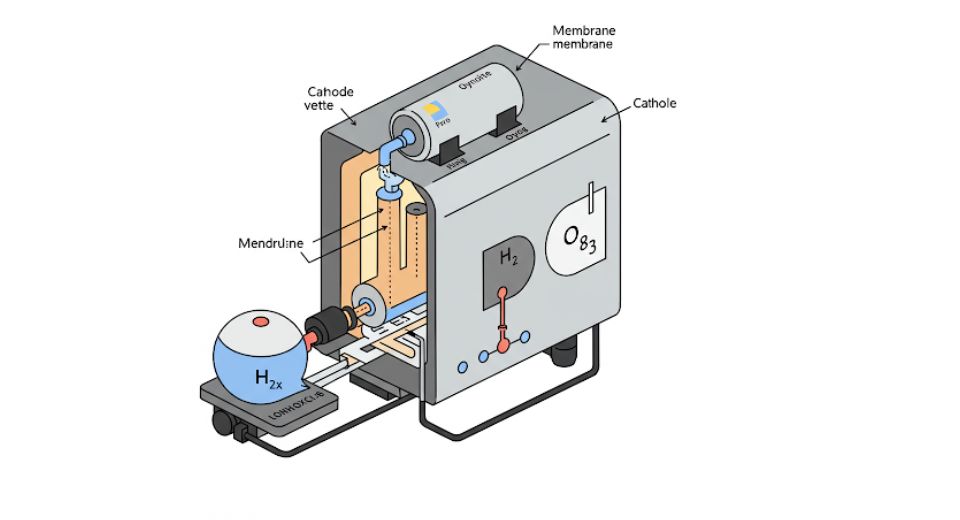
Oct 09, 2023

Metastat Insight report on global Hydrogen Electrolyzer market presents a fresh insight into the evolution and future of this sector. Without losing itself in similar distractions of superficial analysis, the paper delves into the subtleties and trends that have come to characterize this technology's path through the regions and industries it touches. Hydrogen electrolyzers are finding themselves smack in between the energy transition strategies and sustainable applications, and their role in decarbonization with a cleaner energy focus is being significantly amplified. Their value not only lies in providing an alternative fuel vector but also in acting as a catalyst for larger systemic changes in the energy infrastructure.
The global Hydrogen Electrolyzer market is expected to grow to $2,600.8 million by 2032, with a CAGR of 21.0% from 2025 to 2032.
The interplay in this market between technological innovation and the geopolitics of hydrogen will make this market development in a continued dynamic way. The hydrogen electrolyzers face a very complex matrix of determinants related to the policy framework, investment flows, and development of cross-border cooperations. Governments in some regions offer incentives against carbon emissions to promote investments in hydrogen technologies, while the other regions may have opposite policies; therefore, the pace and size of such investments vary in reach. Germany, Japan, and Australia are developing leaders mainly because of strong domestic policy support and international partnership opportunities that allow them to be at the forefront of hydrogen generation. Other countries are now testing the possibility for integration of new electrolysis technologies into existing energy grids, making the most of local resource availabilities and infrastructure limitations.
Along with these agreements, it is a potentially transformative time in hydrogen electrolyser technologies- new designs, materials, and efficiencies in design of electrolyzers are being advanced at a pace where it is economically viable to further reduce production costs and be nearly indefinitely scalable. Companies are trying their hands on several configurations of electrolyzers, including PEM, alkaline, and the solid oxide electrolyzers, each of which comes with its own sets of advantages and disadvantages. The PEM electrolyzer design, for example, is prized for efficiency and small volume, making it fit for both industrial and mobile applications. With that said, the presence of these systems employing pricey materials, including platinum, has certainly invoked research into other cheaper alternatives. Alkaline electrolyzers, on the other hand, while being in operation since much longer and declared quite robust and low-cost in operation, are far less flexible than their PEM counterparts.
Regional adoption of hydrogen electrolyzers mirrors more general economic and environmental considerations. In Europe, this push to net-zero emissions by 2050 has given birth to numerous large-scale hydrogen projects, of which electrolyzers form the backbone. The trend is fueled by the European Union's Green Deal and Hydrogen Strategy, which focus on hydrogen valleys, clusters of interconnected hydrogen production, storage, and usage sites. Similarly, in Asia, South Korea and China are implementing hydrogen electrolyzers as part of their renewable energy policies, spurred both by environmental goals and by the quest for energy security. It is highly regionalized in North America where some states and provinces are in a rush, while others seem to lag due to regulatory ambiguity and infrastructure.
Another aspect influencing the Global Hydrogen Electrolyzer market is the rapidly growing demand for green hydrogen. The use of hydrogen in sectors such as transport, chemical production, and electricity generation is rising to replace fossil fuels with alternatives that are greener. Hydrogen fuel cell vehicles are now becoming more common in the transportation sector, and the supply of clean hydrogen is therefore constant through the electrolyzers. The heavy industries of steel and cement production face difficult decarbonization pathways for which hydrogen seems to be the most feasible means of emission reduction. Their uptake patterns therefore greatly determine the demand dynamics and technological needs of hydrogen electrolyzers.
In addition, supply chain dynamics involved in the hydrogen electrolyzer market add another layer of complexity. Raw material sourcing, manufacturing, and distribution channels all are vital in the making of this industry's growth. Supply chain disruption, as is seen with COVID-19, has revealed vulnerability in global systems of manufacturing and logistics. Companies are looking closer at supply chains to achieve resilience, more so by locating their production and seeking sustainable sources for critical materials. This is beyond the immediate problems but also becomes a strategic adjustment in alignment with more general ESG principles.
Financial consideration also weighs the future of hydrogen electrolyzers as well. Hydrogen technologies are known for long-term advantages; however, the capital invested to establish an electrolyzer system is still something of a bottleneck for many companies. Yet the technology that moves further ahead also lowers costs while raising efficiency: it makes hydrogen electrolyzers ever more financially feasible. Public-private partnerships, government subsidies, and innovative financing models have been quite significant in these technologies being adopted in majority sections of the stakeholders, be it large industrial players or small and medium enterprises.
This dynamic environment does not exclude the contribution of collaborations and strategic alliances. The partnerships among technology providers, energy companies, and research institutions are thus catalyzing innovation in the commercialization of hydrogen electrolyzers. The relationships are typically cross-border, as provided by the fundamental global nature of the hydrogen economy. A common sharing of skills, resources, and infrastructure aims at advancing individual goals while adding to industrywide progress.
Metastat Insight gives a detailed report accentuated by turbulence due to technology innovations, policy transformations, and dynamic market forces. This interplay is shaping the future where not only hydrogen electrolyzers fit into energy systems but form the backbone of sustainable industrial practices across the globe. More likely, its future will be driven by the opportunities and challenges posed during the transition to cleaner and truly sustainable energy, rather than the pool of ever-competing challenges that crave its attention at present, as industries and governments are committed to decarbonization and energy-resilient methods.
Drop us an email at:
Call us on:
+1 214 613 5758
+91 73850 57479